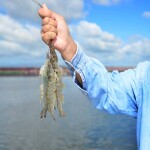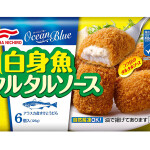Like fine wines, microbrewed beer and artisanal cheese, wild salmon has become a niche product in its own right, with different species and harvest locations giving the fish a unique appearance, taste and selling point with consumers.
On the fresh sheet at Elliott’s Oyster House in Seattle, Executive Chef Robert Spaulding offers a wide variety of king, coho and sockeye salmon from the Pacific Northwest when fresh salmon is in season. Included in his offerings may be fish from the Copper and Columbia rivers in Alaska and the Fraser River in British Columbia. With keta, also known as chum, Spaulding limits himself to those fish from the Yukon River. He also offers Yukon River and Lopez Island sockeye and troll-caught kings, including ivory kings, which are rare, white-fleshed versions of the king salmon.
Spaulding is particular because his clientele is too. “Probably 20 percent to 25 percent of sales are from salmon,” he says, which translates to sales of more than $2 million a year.
“Our customers are always keen on fresh, but sometimes, depending on the time of year, we have to educate them about the quality of frozen,” he explains.
Nearly 90 percent of the restaurant’s salmon comes from Alaska, says Spaulding, who works directly with the fishermen, when possible, as well as with distributors. In his efforts to get as close to the catch as possible, Spaulding has accompanied fishermen working the Yukon River and has pointed out the size and characteristics of the fish he wants. He’s also been known to drop in on his distributors to see how the fish is handled as well as to make selections in person.
Spaulding is very specific about his likes and dislikes. “I like to choose fish from long, cold rivers,” preferably line-caught fish, he says. Kings should be 18 pounds or more; coho, 9 pounds and up; and sockeye, at least 4 pounds.
On the menu, the salmon is offered alder-planked with a house seasoning rub, simply grilled with olive oil or flash-seared with Cajun-style spices. “I keep it as simple as possible because many guests have ties to the seafood industry, so it behooves us to present it in a way that they can appreciate.”
Click here to read the rest of the story on wild salmon, written by SeaFood Business Contributing Editor Joanne Friedrick and appearing in the magazine’s April issue.






